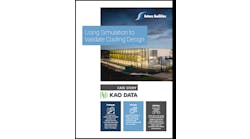My calling for sustainability originated from a realization at the age of 14 that the lack of stars in the sky growing up in my hometown of Guangzhou, China, a population of 15 million, was a direct result of severe air and light pollution.
The urge to change this status quo led to my pursuit of a Mechanical Engineering degree abroad at the University of Wisconsin-Madison.
I thought by becoming an engineer, I could be the change I wanted to see (no pun intended). However, I quickly learned I couldn’t do it all on my own. It was through numerous experiences that I learned the power of collaboration is where real change happens. From my time interning at a research lab in Germany, working with diverse stakeholders in the built environment, to now leading a Design for Environment program facilitating product innovation among cross-functional teams, a common narrative has stood out. I’ve learned that a collaborative environment built on diverse perspectives and trust, serves not only as the soil that nurtures bold sustainable ideas, but also as the roots that allow these ideas to grow.
So from my perspective, when it comes to achieving carbon neutrality within the digital infrastructure industry, companies have to look both inward and outward. In addition to reshaping internal processes and innovating product design, companies must also engage in collaborative efforts and industry-wide initiatives to make a substantial impact. This involves fostering partnerships with like-minded organizations, participating in cross-sector dialogues, and supporting research and development for sustainable technologies.
Meaningful environmental change comes from many companies working together towards a common goal. Kohler has been a proponent of a collaborative approach for some time and participates in the iMasons Climate Accord (ICA) — a coalition united on carbon reduction in digital infrastructure that works to influence market-based decisions and drive the industry to achieve carbon neutrality. I am an active member of ICA's Equipment Working Group, and the group's goal is to decarbonize data center equipment by enabling transparent communication of embodied carbon and building market-based incentives to select zero carbon equipment. I work alongside peers from neighboring companies in various industries who are equally committed to advancements in the design, construction, and operation of sustainable digital infrastructure. We are creating a set of case studies to demonstrate the different methodologies that can be used to account for the carbon footprint of data center equipment. Andrea Desimone, a fellow committee member with Schneider Electric, and I recently published a case study that provided an overview on how to calculate embodied carbon, using CIBSE's TM65 calculation methodology and tool.
Making significant change also means leading by example. Kohler co-hosted the Power Down: Getting Green Data Center Retreat with Schneider Electric in September. The small, private event brought together a group of global data center leaders, paving the way toward making our industry more sustainable. I had the honor to co-present a session on Scope 3 Emissions with Alex Rakow, ICA’s Equipment Working Group Chair and Schneider Electric’s Data Center Sustainability Lead. Together, we facilitated ideation around how the data center industry may decarbonize value chain emissions and engage with its suppliers. It was the ideal environment to delve deeper into discussions and walk away with collaborative, actionable steps to advance sustainability. As a result of the event, Kohler and Schneider have architected project teams and goals surrounding critical findings. These working groups will come together to ideate about creating real solutions that will positively impact the environment and industry. Kohler continues to innovate with its product lines as well. The company recently launched a hydrogen fuel cell product line to support more sustainable energy solutions, as well as Conscious Care, a maintenance program which features fuel-saving No-Load Exercises that enable a diesel generator’s regular monthly exercise to be run without load and still avoid any "wet stacking".
It is both personally and professionally rewarding to contribute to broader conversations about how companies can enhance their own carbon reduction strategies and accelerate the overall transition towards a greener digital landscape. Recognizing the interconnected nature of the digital infrastructure ecosystem is paramount in ensuring a collective and practical approach to achieving carbon neutrality across the industry. Onward, upward and to a sky full of stars that we can all see!

Louis Liu
Louis Liu is a Sustainability Project Engineer at Kohler Power Systems. With a focus on product sustainability and innovation, he leads the Design for Environment program for New Product Development. In addition, he conducts Scope 3 emissions analysis and ESG reporting, as well as creating GHG reduction strategies and roadmap for the generator business.
Born and raised in Guangzhou, China, Louis came to the U.S. to pursue a Mechanical Engineering degree at the University of Wisconsin-Madison. Louis was named one of the youngest 40 Under 40 recipients by In Business Magazine, Live Forward Awardee by Sustain Dane, and Green Builder of the Year by The Daily Reporter.






